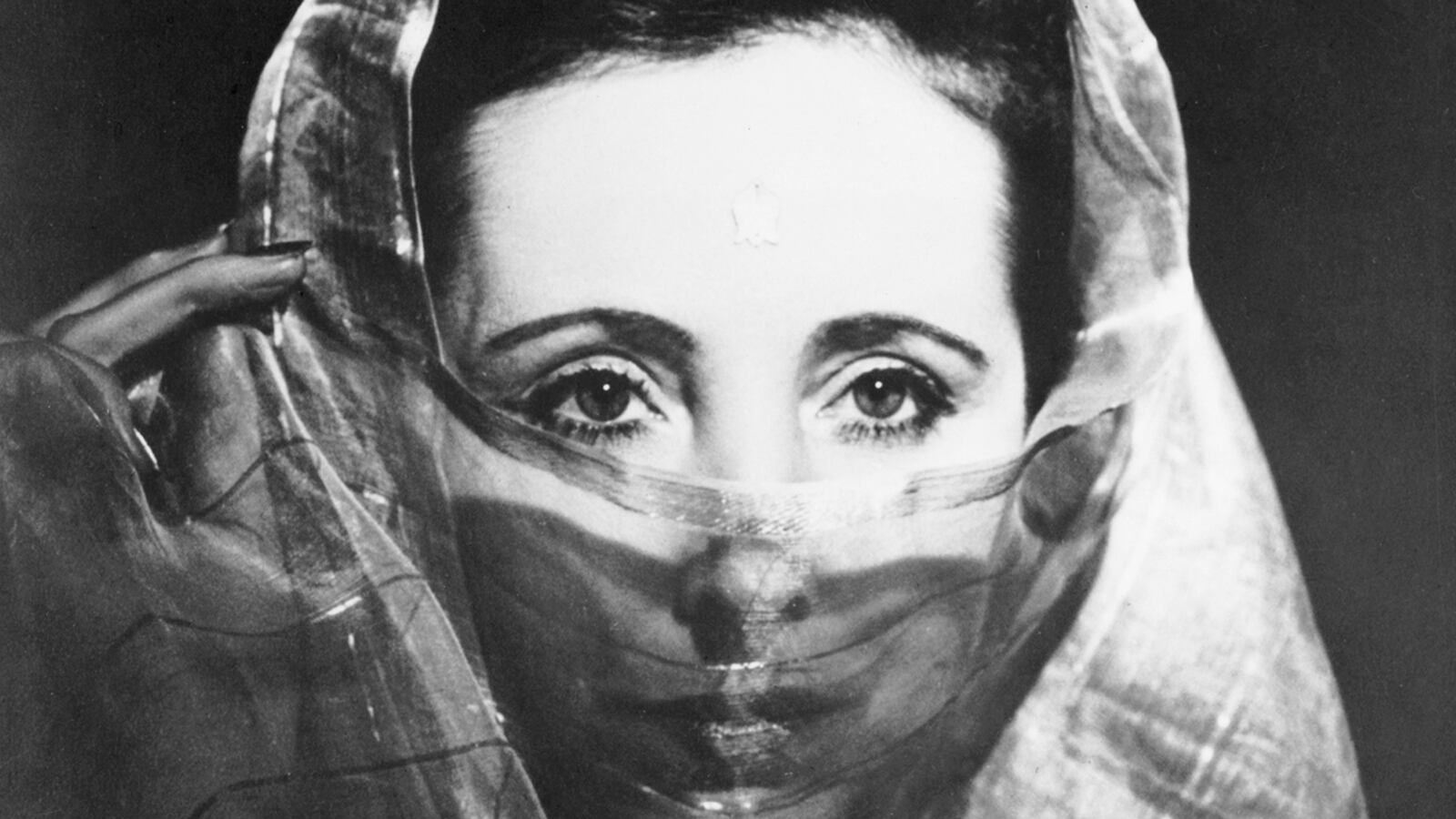Anaïs Nin, the celebrated diarist and writer of erotica, has always appealed to a particular reader: the insecure but precocious teenage girl, the obsessive governed by a desperate longing for intimacy (“I need love more than food,” Nin confided to her journal in 1946). That allure lives in her exhaustively detailed diaries, published in seven volumes and covering five decades. It is here that readers can explore Nin’s every heartrending expression of love, intimacy, and sexual passion, peering in on a lifelong quest for “the one who would complete” her. We read them and say to ourselves, that’s how it felt.

Nin’s used her diaries as an outlet for self-discovery. They are, of course, revelatory of her as an individual, but they are also unique in having become more important than her fiction, short stories, or criticism. But irrespective of genre, writing was her raison d’etre, her way of luring men, as she confesses in a 1940 journal entry:
Create, Anaïs. Every word you wrote was always the golden key which opened the doors of your prison. The Lawrence book brought you Henry. The House of Incest Gonzalo. The Winter of Artifice John. It is your female chant for man, for the lover. Write. It is your ornament, your grace, your seduction, your chant for courting. Create, Anaïs. He will come.
And he came in many forms. Every novel or book of stories Nin published was provoked and influenced by the men she loved and lived for, an impressive cast that included psychoanalyst Otto Rank, novelist Henry Miller, and writer Gore Vidal.
In the early 1940s, Nin produced smutty short stories for a private collector (at a dollar per page), all of which were published posthumously. But it was the nuance, the complex emotion, the fragility of sex that would inform her diaries. She later recalled being “conscious of a difference between the masculine and feminine treatment of sexual experience,” of the “great disparity between Henry Miller’s explicitness and my ambiguities—between his humorous, Rabelaisian view of sex and my poetic descriptions of sexual relationships.”
Nowhere is this disparity more apparent than her diaries (first published in 1966, while she was still alive), which established Nin as both a cult literary figure and an avatar of liberated female sexuality. With Mirages: The Unexpurgated Diary of Anaïs Nin, 1939—1947, readers now have the complete text of her journals from these important years (much material was removed from previous editions at the request of her husband, Hugh Guiler, and other lovers still living). The entries reveal a woman in turmoil, meticulously analyzing every flutter of emotion, displaying a neurotic self-absorption often found in those who discover sexuality at a young age—and grapples with its force through adulthood.
When reading the unexpurgated letters and diaries of other literary figures, one must sift through the mundane details of life: what they bought, what they ate, what they wore. These documents weren’t, after all, meant for publication. Nin’s were, a fact she both occasionally acknowledged and frequently denied. (“I want to publish, to give, to communicate, but I can’t publish the diary.”) Stripped of the dull and tedious, her journals are an exercise in confession and expression, as both an artist and woman. Without them, she could not exist. “For many days I lived without my drug, my secret vice, my diary. And then I found this: that I could not bear the loneliness,” she writes in 1943.
The diary was her confessor, a repository of perverse thoughts and abnormal sexuality. It shocks the reader still when confronting details of what Nin later claimed was an incestuous relationship with her father. In 1941, she recalls hating the “punishment” meted out by her father, but “Now I ask myself if the hand which administered the powerful spankings must have awakened, at the same time as the pain, a region of pleasure.” It was in a seedy shop in Paris “where they show erotic lantern slides with one penny,” that this indelible incident from her past morphed into overwhelming sexual desire: “As I watched this [spanking] scene I felt the most amazing pleasure. I was stirred, I grew wet between the legs, and began to palpitate, almost reaching the orgasm. This was a revelation.”
Nin does not belabor this relationship in Mirages (she exorcised that demon in Incest, another unexpurgated and posthumously published diary). She agonizes instead over her affairs and insecurities, her inability to be satisfied with one lover. “I need proof of love constantly,” she writes in 1940, “and that is wrong and cruel for the others.” Going from one man’s bed to another didn’t bring her contentment of sexual satisfaction, but her promiscuity shaped her.
Mirages underscores the dreamlike mindscape of a woman who is fascinating because she is so human—who writes about love and sexuality with a frankness that makes the reader feel intimate with her. But that frankness also reveals a frenetic, debilitating obsession with physical intimacy.
“Gonzalo came alone to my room and kissed me passionately… Later, lying in bed, I felt him so keenly it was painful, and he was so bound up and panicky, as he always is before a climax, that he could not possess me. But what burning caresses, what wildness of feelings, what a bath of passion…His emotionalism was overwhelming… I felt his love, the fire of it…Everything was transfigured. All the feelings one has at the beginning of love, a love of the whole world, ecstasy.”
“Burning caresses,” pain coiled up in pleasure—this is the sexual madness that makes Nin’s writing so intoxicating for, well, anyone who has ever been consumed with desire.
Even before her diaries were published, Nin was slotted as sex writer, her work often prudishly dismissed as mere pornography. But in reading Mirages one understands that the only commonality between porno and her writing is the physical act of sex. And there’s plenty of that, but Nin is more concerned with what surrounds sex—the ideas and emotions that guide her towards carnal pleasure. Conversely, porn is about the act of completion; Nin’s descriptions of sex are explicit, but in Mirages she seems more interested in what precedes and follows the act, how every sexual experience subtly transforms her. Here, for example, is a 1946 diary entry describing sex with 17-year-old Bill Pinckard:
I buried my face in his thin shoulders, felt the delicate bones, kissed his tender, silky, lean body, his belly, his hips, took his penis in my mouth, his penis hard and leaping, breast against breast, tongue against tongue, mouth within mouth, and flights away from the burning sweetness into the cooler regions of the neck, ears, hair, to rest from the fire of his penis and the warm, flowing honey in which he dipped his fingers. In their light agility he weaves, interlaces, kneads, binds—it isn’t just a touch, a weight of flesh, it is a making of lace, a tying of threads, an encirclement, an envelopment. Sliding, smooth, subtle. How some can find the entrances to the being, and others cannot.
Reading these rhapsodic descriptions, we recognize the universally understood (if clichéd) difference between no-strings-attached sex and “making love.” They’re both ordinary human experiences, but Nin renders them ecstatic. At the point of climax during sex with the young artist John Dudley, she “came dancing, always with a pounding heart, left after a bath of love.”
Of her numerous trysts, even these relatively insignificant ones are given a surprising measure of attention. But no one occupies its pages as much as Henry Miller, the writer and lover with whom she is most associated. It is here—including in one particularly bitter letter Nin wrote to him in 1943—that we glimpse for the first time what destroyed their 12-year affair and literary partnership:
Why can’t we stop wounding each other and destroying what was created? You give the weakest and the worst interpretation of my devotion: the neurotic one. That is what hurts me. I never gave the worst interpretation of your dependence: I always gave it the highest one, the justification of your creation. I lived for that highest interpretation. You seek only the flaw in mine.
When Miller responded, Nin confessed to her diary of harboring a “feeling that I disagree with every word he says, that he misunderstands me, that the contact is broken.”
Mirages ends in 1947, five years after her affair with Miller ended, when Nin meets the handsome and retiring Rupert Pole, a much younger man and “the One” who seemed to satisfy all of her needs. “With words, I touch the face of Rupert… I feel for the first time the reality of a phrase June used to say to Henry, ‘Up to the hilt, my love,’” she writes.
But in the end, there was no one person who could complete Anaïs Nin. She continued to lead a bifurcated life, dying in 1977 with two husbands—Hugh Guiler, the man she married in 1923, and Pole—neither of whom knew of the other’s existence.
Pole, who died in 2006, became Nin’s literary executor, further ensuring that certain vital material from her diaries remained unpublished. Mirages partially corrects this injustice, introducing a new generation of readers to a broader, more complete picture of her complicated mind and evocative prose. And Nin’s diaries will remain popular not just because of their honest and lurid sexuality, but because of what that honesty demonstrates: the universality of feelings rarely exposed.






